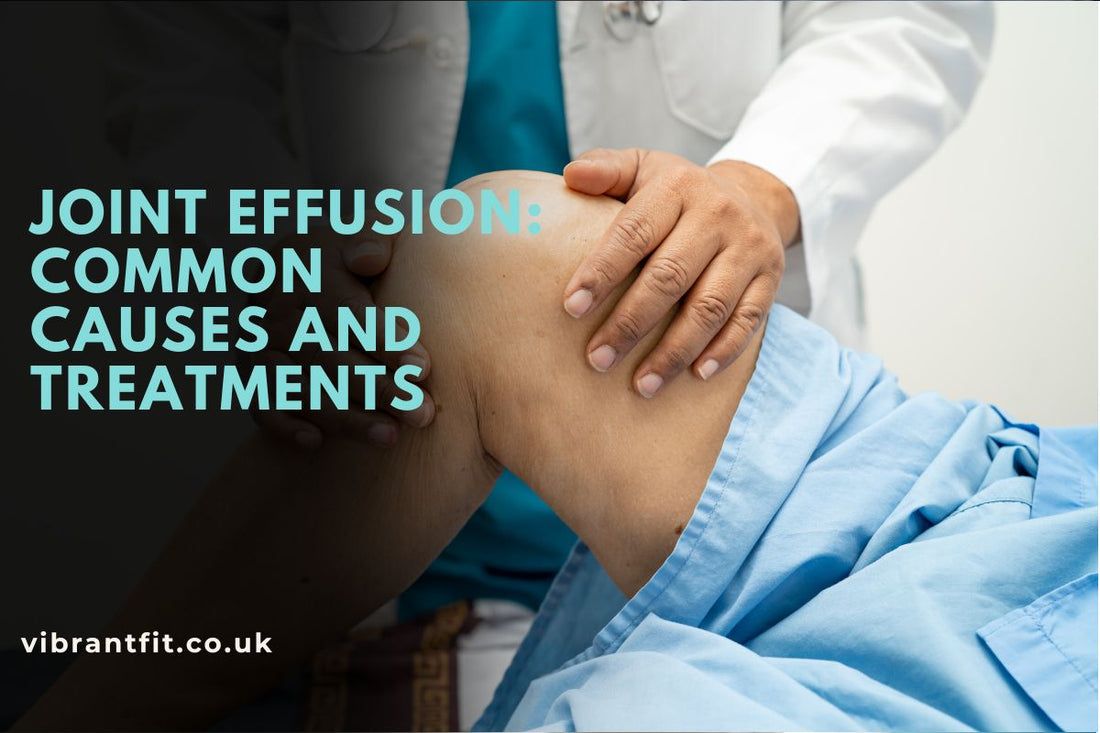
What Is Joint Effusion?
Share
Joint effusion happens when extra fluid builds up in or around a joint, causing it to swell and sometimes become painful. It most often affects joints like the knee, wrist, or shoulder. Knowing what causes joint effusion, spotting the symptoms, and understanding your treatment options can make a big difference in managing the condition. This article will guide you through the basics so you can take the right steps to ease discomfort and protect your joint health.
What Is Joint Effusion?
Joint effusion occurs when excess fluid collects inside the joint space or in the tissues surrounding the joint. Normally, a small amount of synovial fluid lubricates the joints to help smooth movement. However, when this fluid increases abnormally, it causes swelling and discomfort. Your joints consist of bones, cartilage, ligaments, tendons, bursas, and a synovial membrane. All of these work together to allow movement and absorb shock. When fluid floods these structures, the joint appears swollen and may hurt.
Common Symptoms of Joint Effusion

Joint effusion can present with several symptoms, making the joint uncomfortable and limiting movement. The swelling is often the first noticeable sign, making the joint appear puffier than usual. You might also experience pain, which can be dull or sharp depending on the cause. The joint may feel stiff, especially after periods of rest, and warmth or redness can occur if inflammation or infection is present. Sometimes, the joint may feel heavy or under pressure due to the excess fluid inside.
Symptoms of joint effusion include:
-
Swelling or puffiness of the joint
-
Aching or sharp pain
-
Stiffness and limited range of motion
-
Warmth and redness of the skin around the joint
-
A feeling of heaviness or pressure inside the joint
-
Fever or chills (if infection is present)
Causes of Joint Effusion

Several factors can cause joint effusion. Often, the condition is a symptom of another issue affecting the joint.
Common causes include:
-
Infections (Septic Arthritis): Bacteria or other pathogens infect the joint, leading to pus buildup and inflammation. This condition is serious and requires urgent treatment.
-
Inflammatory Conditions: Arthritis types such as osteoarthritis, rheumatoid arthritis, and gout cause inflammation, which triggers increased fluid production in the joint.
-
Trauma and Injury: Injuries like ligament tears, fractures, or dislocations damage joint tissues, resulting in swelling. Overuse injuries can also lead to repetitive strain and fluid buildup.
-
Other Causes: Tumours near the joint may cause abnormal fluid accumulation. Post-surgical reactions or injections can sometimes provoke joint effusion.
Which Joints Can Be Affected?
Joint effusion is not limited to one specific joint. It most commonly affects large, weight-bearing joints such as the knee, shoulder, ankle, and elbow. These joints are more prone to injury and wear. Small joints in the fingers, toes, and wrists can also develop effusion, often linked to inflammatory diseases like arthritis or gout. The symptoms and severity may vary depending on the joint involved and the underlying cause, but the swelling and discomfort remain the key features.
How Is Joint Effusion Diagnosed?
Diagnosing joint effusion involves a combination of medical history, physical examination, and diagnostic tests. Your doctor will start by asking about your symptoms, any recent injuries, or medical conditions like arthritis. They will examine the joint for swelling, warmth, and range of motion. Imaging tests such as X-rays can reveal bone damage or arthritis. Ultrasound and MRI scans provide detailed views of soft tissues and fluid buildup. A critical test is joint aspiration, where fluid is drawn from the joint using a needle. This fluid is analysed for infection, crystals, or other abnormalities.
Treatment Options for Joint Effusion
Treatment of joint effusion depends largely on the cause. Addressing the underlying condition is key to resolving the swelling and discomfort. For infections, antibiotics and sometimes surgery may be necessary. Inflammatory conditions often require medications like nonsteroidal anti-inflammatory drugs (NSAIDs) or steroids. Injuries may need rest, immobilisation, or physical therapy.
Common treatments include:
-
Rest, Ice, Compression, and Elevation (RICE) to reduce swelling and pain
-
NSAIDs to control inflammation and relieve pain
-
Joint aspiration to remove excess fluid and relieve pressure
-
Antibiotics for joint infections
-
Physical therapy to restore mobility and strengthen muscles around the joint
At-home care can also help manage symptoms. Applying ice packs or moist heat can reduce swelling and ease pain. Maintaining a healthy weight lessens stress on joints. Avoiding activities that aggravate the joint and using braces or supports may speed up recovery.
Also read : What is Kienbock's Disease
Supportive Braces to Help with Joint Effusion

Wearing the right brace can really help when dealing with joint effusion by reducing swelling and giving your joint the support it needs. For knee problems, the MotionGuard Knee Brace provides gentle compression and comfort, which can ease pain and help you get back to your normal activities. If your wrist is affected, the TFCC Support Wrist Brace offers steady support throughout the day, helping to take the strain off your joint. For ankle issues, the Adjustable Ankle Support Compression Brace wraps the joint snugly, helping to reduce swelling and keep the ankle stable. Picking the right brace can make a big difference in how well your joint feels, but it’s always best to talk to a healthcare professional to find the one that suits you best.
Conclusion
Joint effusion is a common condition where excess fluid builds up in or around a joint, causing swelling and discomfort. It is usually a sign of an underlying issue such as injury, infection, or arthritis. Understanding the symptoms and causes can guide you to appropriate treatment. Early medical assessment and proper management can relieve pain, reduce swelling, and protect your joint’s long-term health. If you notice persistent joint swelling, it is best to consult a healthcare professional for diagnosis and care.
